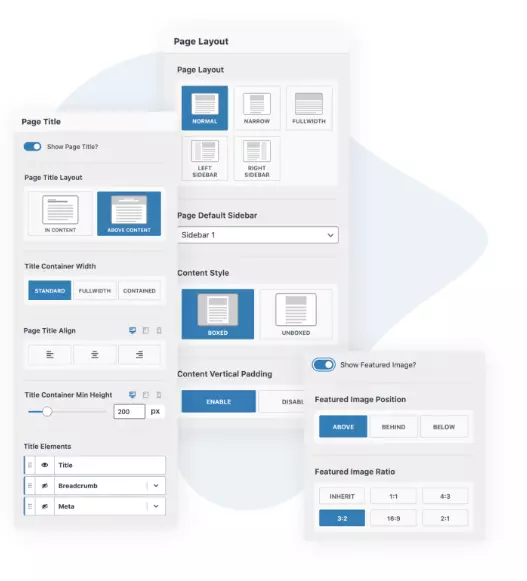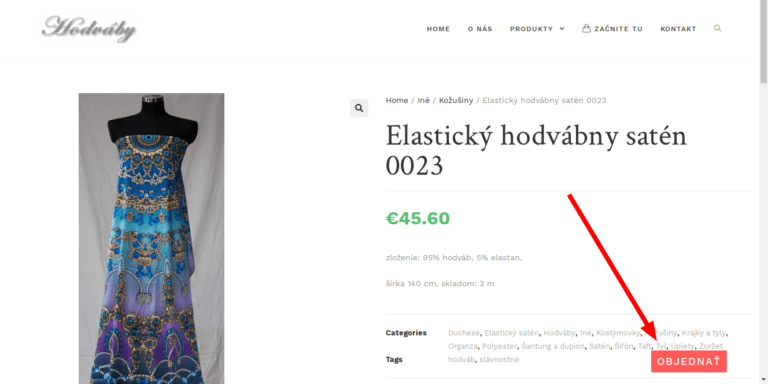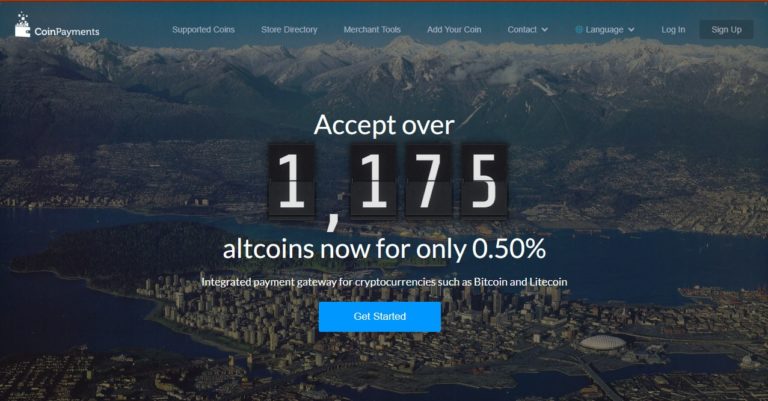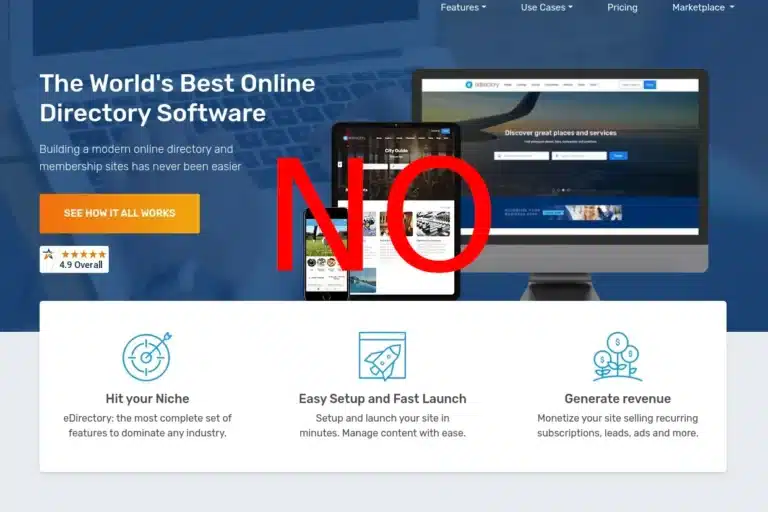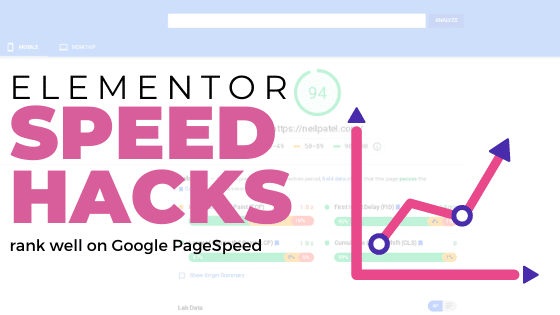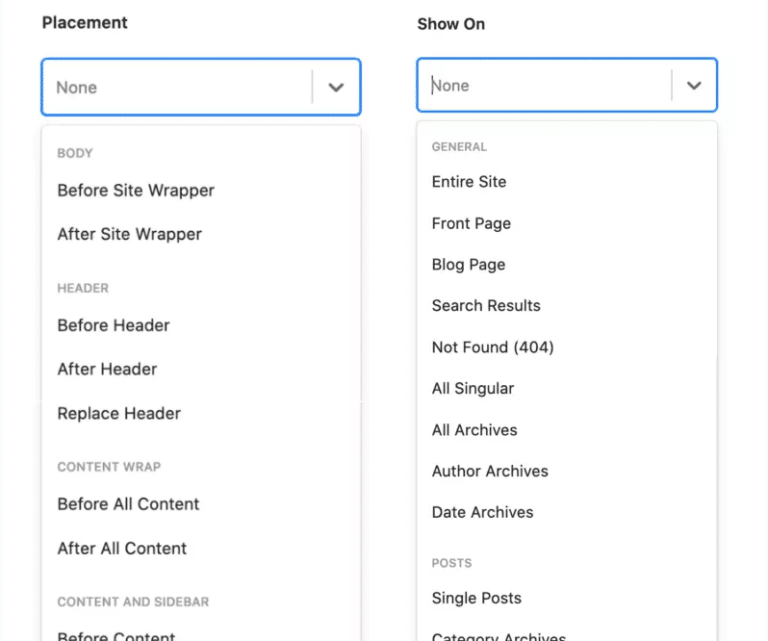Case Study: How I increased organic traffic to my blog: 0 to 56,000 views in 1.5 years
Disclosure: This post may contain links to affiliate partners and products, that I have selected manually and would or have bought myself. I will get a commission if you decide to purchase anything after clicking on these links – at no cost to you.
I’m going to summarise the key steps I took to get my authority site nimblecamper.com organic traffic from 0 to 56,000 monthly views in 1.5 years through SEO only – without any dreadful backlink chasing or paid advertising.
Here’s what it can look like, if you apply the steps I outline below – going from 0 to 56,000 page views using nothing else but keyword research and targetted articles.
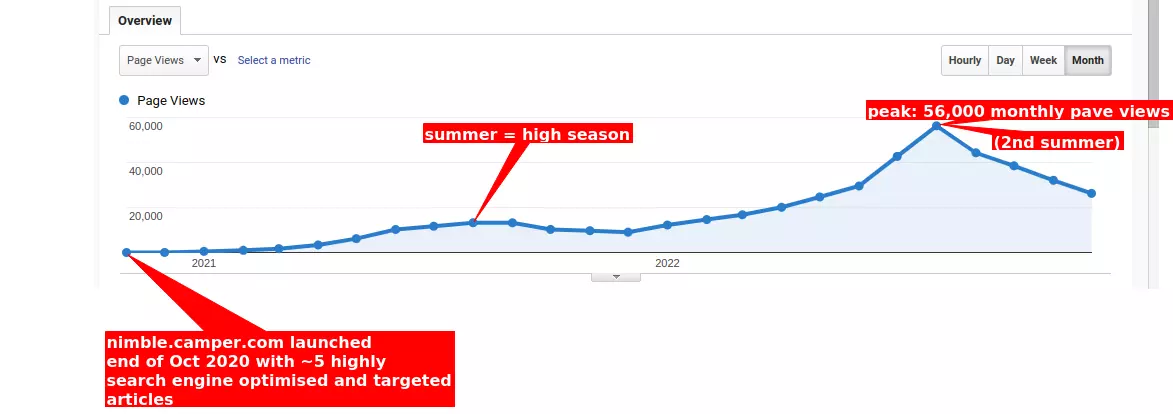
- The domain went live by end of October 2020, bud first key posts in November 2020
- summer is my peak time (I write about car camping and outdoors-related content for primarily EU audience at the time window used in this post)
- you can see the first summer peak, then cool down during winter, then a much better summer peak time with a bit stronger cool down
- August 2021 (first peak) = 13,000 page views
- August 2022 (second peak) = 56,000 page views (4.3 times more or a 430% increase)
Steps I took to increase organic traffic on my blog
Initial market research – know your niche and potential traffic
Before I started writing anything, I thoroughly researched the niche – are there any other websites that write about this stuff, what is their traffic, top keywords and are there any gaps I should fill in? I spend a few months prior to the launch on this. This gave me a good idea of what I can expect if I do a good job, and what topics to include in my first posts.
- I prepared a list of topics, which was a mix of what I wanted to write about (what I was excited to write about and wanted to share with the world, regardless of SEO) and what I knew I needed to write about (what keywords to target) to get traction
- This was helpful too as I found many forums and websites, not in the top 20 that had very good information (but badly written, no SEO) that I could combine into a very good post. These also served as good sources of additional information and references.
- I have also participated in some threads on these forums where my posts could help other forum participants and pasted backlinks to my posts there, some were dofollow and high authority.
It also helped that I had lots of data about cars and their boot measurements that I collected during the previous months during my own research into what everyday car is best for camping. More about that in this post. This gave me good unique content to write about – I couldn’t find any information like that, all on one page, on any other website – which also confirmed my niche/market gap theory.
Outline a barebones structure of key content, then write it well and publish regularly
Instead of trying to write too much before I launched (and hence delaying the launch + doing a lot of work upfront without knowing if it will get traction), I heeded AuthorityHacker’s advice – build a hub with pillar (cornerstone) content to see if it gets traction. If it does, build on that.
I have prepared a list of posts to write and went ahead (each post required between 2-10 hours to write):
- 1 long-form highly targeted post at the end of October 2020 + a few key pages (homepage, blog, about us page, contact) – 0 page views
- 2 long-form highly targeted posts during November 2020 – 0 page views
- 2 long-form highly targeted posts during December 2020 – 38 page views
- 3 long-form highly targeted posts during January 2021 – 499 page views
- 3 in February 2021 – 960 page views
- 5 in March 2021 – 1715 page views
- 1 in April 2021 – 3354 page views
- 4 in May 2021 – 5617 page views
- …etc
As you can see, it wasn’t a fast start with loads of content – instead, I was making sure the articles aren’t rushed and had good content + are keyword targeted and followed a specific search intent and I published regularly. The rate at which I published was influenced by the amount of other work I had and what else I was doing – like building a retaining wall out of recycled tires, which doesn’t leave much energy to write at the end of the day!
And the page views kept growing nicely with it – therefore I had my sense of achievement and success with each new post which kept me motivated to write more (and keeps today too).
This is important – you need some positive feedback/reinforcement to keep going and seeing that your research and work are resulting in growing traffic is perfect for that in the early stages. Don’t worry about monetisation yet – focus on traffic first, you can monetise it with Ads or Affiliate links later.
Research keywords for each article thoroughly
You can just write an article well and it will naturally have some keywords. But you can take the same article and boost its reach just by improving its keyword placement in content (ensure important keywords are in these elements) and structure (ensure you have these elements in your article):
- Title (H1 heading)
- subheadings (H2-H5) – use them to break down long pieces of content into smaller, easily digestible sections
- you should also have a table of contents that generates automatically out of these headings
- shorter paragraphs (visitors get scared of long chunks of text + by reading and finishing smaller paragraphs they feel a little sense of achievement each time)
- bullet points, numbered lists
- highlighted sections of text – key information can be separated from the rest by a different background or larger font
Make sure your website follows Google’s Core Web Vitals
You don’t have to achieve a 90/100 mobile score, but make sure you’re not in the red – get at least 50/100 (if it’s a complex site with Woocommerce and Ads) or higher if it’s a simple blog at the beginning. I always aimed at achieving the best possible score without having to sacrifice too much: functionality, design or having to pay for custom coding. That usually gets you 60/100, which is more than enough. Not even the biggest names out there (bbc.co.uk or Amazon.com etc) achieve that. Plus, once you turn Adsense on, it will impact it greatly anyway (Google’s own service!) and you can’t do much about that. My nimblecamper.com homepage Pagespeed score is 66/100 at the time of writing.
Tools I used
- Ahrefs.com annual subscription – this was expensive but provided a great depth of keyword and website stats that gave me a headstart. I used it for the first year and then I switched to a cheaper alternative:
- Ubersuggest (Neil Patel) – at about 25% of Ahrefs price, but it does most of the stuff I needed (and used Ahrefs for): website traffic and top keyword research, keyword stats and top results, keyword position tracking for my website, backlink tracking and domain authority.
- Notion – an all-purpose solution for notes about what keywords to focus on, tables with their average views, topics to write about and much more
- Google Sheets – more advanced tables – tracking anything that’s too complex for Notion
- KadenceWP – the best suite of Theme+Plugins to build fast and versatile websites. Read more about why I recommend KadenceWP here. Get 10% off if you use code nimble10.
- Pretty Links – very easy to create pretty links (“nimblecamper.com/prettylinks/” instead of something like “prettylinks.com/?aff=2136“) for all your affiliates and see click stats over time.
- RankMath – one of the best SEO plugins that help you set everything right, specifically target each post to chosen keywords and see a score, a sitemap to submit to Google Search Console, custom SEO Title + Description for pages, posts, custom post types etc.
- Grammarly – a must-have if you care about your writing – fixes typoes, suggests different ways to say things, and synonyms and generally keeps your writing clean and more engaging.
The website has gone through several revisions since its launch – I have changed the design, layout, and menus and added more features, removed others that didn’t work etc.
Keep trying new things and new features and don’t be afraid to scrap the ones that don’t deliver good results (use 80/20 – Pareto rule) and double down on the ones that do.
What I would do better if I started again
- I would write more posts during the first months – at least 4 each month and try to keep this rate up as much as possible
- perhaps invest in a copywriter to help out once you get some Ad revenue flowing
- the reason for this is that once you have confirmed that your niche website does get traction, the more good posts you put out there, the more traffic you will get – so the sooner you do it, the sooner you start making more money.
- I wouldn’t waste time trying to get backlinks via any recommended methods. They take way too much time and the results are miserable as (if you have a blog of your own), you probably know that the whole world and his dog is using any backlink strategy out there to get backlinks. Websites you will be targetted are probably inundated by backlink requests “I love your post and have something better you could add..” etc. I let backlinks grow naturally instead by creating link-worthy content.
- saying that – don’t shy away from any opportunity that might present itself. Just don’t waste your time cold-emailing.
- I also wouldn’t bother with link-building services – the expensive ones will take years to pay off and the cheap ones will give you links that don’t add much value. I tested a cheaper service and
- Monetize with Ads earlier (Adsense, Monumetric, Ezoic – whatever works best for your audience) – initially, I only focused on affiliate links but realised that many of the products I could promote don’t even know what an affiliate programme is + they are physical (car tents, camping boxes, roof tents) and customers prefer to buy them in person.
- I learned that if you are skilled enough (and/or have a good theme like Kadence that allows custom automated ad placements), you don’t need a 3rd party to place Ads on your website. You can turn on Adsense Auto Ads + create a few good manual slots for the best results.


